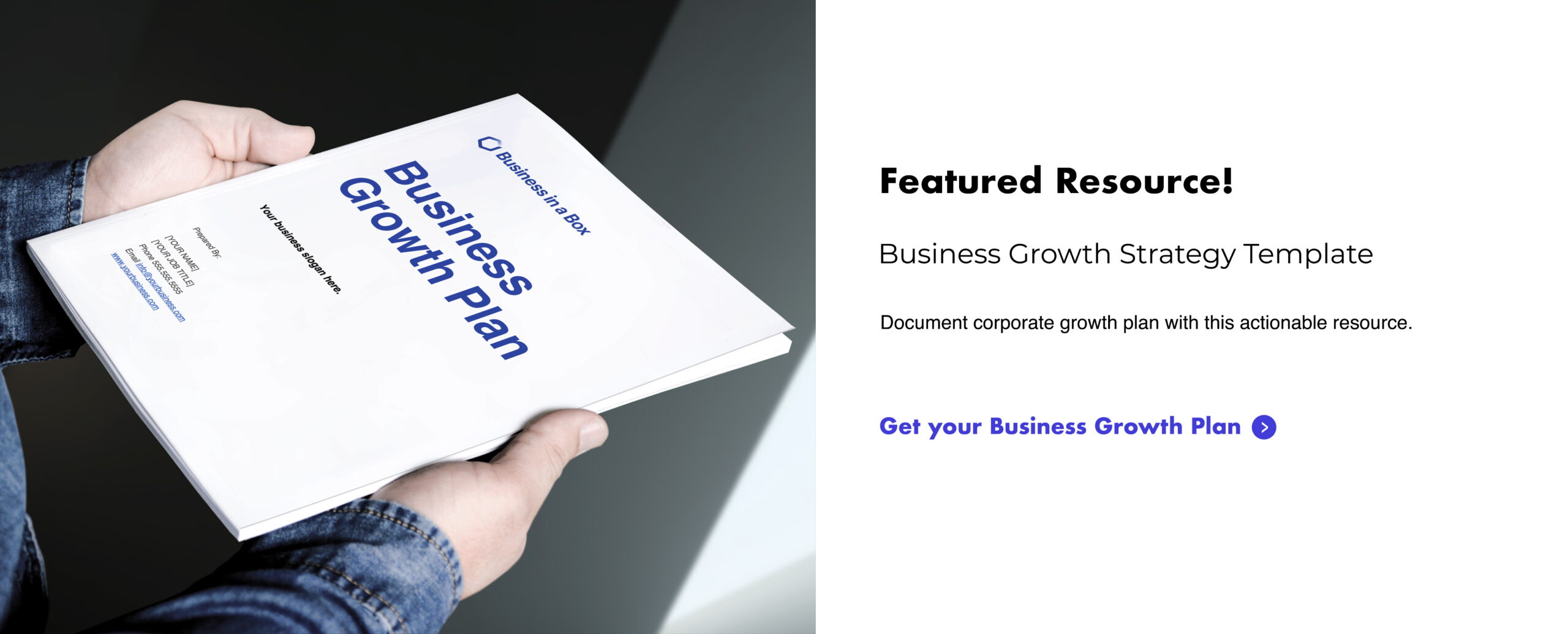The Small Business Guide to Growth: 16 Tips on How to Expand a Small Business
According to the National Small Business Association’s 2017 Year-End Economic Report, small business confidence is at an all-time high. In fact, 59 percent of respondents to the NSBA’s survey said they anticipate economic growth throughout 2018, and a third of respondents (“the highest level in more than a decade”) said they felt very confident about their business’s future.
Clearly, the future is bright.
Regardless of the current size of your business, it’s best to plan and structure so that you’re ready for the future. When it comes to growing a small business, a little proactivity will pay off in the long run. Here are 16 tips on how to grow a business.
1. Invest in systems
You’re a badass at this whole business ownership thing. We already know that. But if you’re trying to do everything on your own, you might be limiting yourself for potential growth. A business powered by systems is one that can handle the multi-layered demands of expansion.
Having robust systems such as a solid CRM or powerful e-commerce software in place can help you focus on the important parts of growth and expansion. Review your current operations to see what aspects are repetitive or monotonous and make it your goal to automate or outsource as much as possible, so you can remain focused on small business growth.
2. Improve your homepage
In addition to doing things like improving SEO and making signing up or purchasing easy, make sure your homepage looks as perfect as possible.
Consider this: 96 percent of visitors to your website aren’t ready to buy something. Your homepage is most likely where they’ll land. If it’s cluttered or hard to navigate, they’ll go elsewhere. If the web copy is bad or doesn’t show the value of your product, it’ll be turned off. Sometimes a simple change can boost revenue tremendously. Tandberg, a video conference company, increased lead generation by improving its call-to-action. Through A/B testing and keyword optimization, Tandberg established a call-to-action on its homepage that delivered 50 percent more leads in just the first month.
3. Focus on analytics
The big data analytics market will surpass $200 billion per year by 2020. Clearly, many companies, especially tech giants like Facebook and Amazon, realize the value of utilizing data. And you should, too.
As a report in The Economist notes, “the world’s most valuable resource is no longer oil, but data.” The good news is that data can benefit any company, unlike oil. Even better, you don’t have to splurge billions of dollars (though some companies are). As a business owner with a website and social media pages, you can employ free or freemium tools to gain insights into your customers.
For instance, Google Analytics shows bounce rate, page visits, average time on site, and how your audience is arriving at your website, which can provide insights into where to focus your marketing efforts. Unbounce is another analytics tool worth considering, especially for figuring out how to optimize landing pages and increase conversions.
4. Make your blog shine
It is really not surprising that 53 percent of marketers state blog posts are their most important inbound marketing activity. Corey Wainwright, a content marketing expert, writes that good blogging can drive traffic to your website, convert that traffic into leads, establish authority in your industry, and achieve long-term results for your business. When you consider that 81 percent of shoppers conduct research online, good blog posts can bring your business a lot of value over time. Potential customers will naturally find your site once your blog has an established online presence. So make sure the bulk of the content is evergreen. Such posts will only require periodic updating, bringing you better value for your investment.
On all these sites, add pictures, links to blog posts, and relevant information about your company. Interact with customers—and respond to their needs and questions. This will improve your brand image.
What’s most beneficial about social media and digital advertising is that you can leverage ratings and reviews. In fact, 92 percent of consumers trust recommendations from family and friends. If one customer gives your company a “like” and says something positive, it will get the attention of people in their network, creating a word-of-mouth effect that could grow your business.
5. Make a plan to grow your business
From email marketing campaigns to optimize your website for mobile, to encouraging online reviews—there are many ways to grow your business. The key is first having a plan that you can execute. Unfortunately, nearly half of businesses are doing digital marketing with no clear strategy. Once you have an idea of what you want to do, don’t blindly stick to it. As Matt Rissell, CEO of TSheets, attests, “the best way to grow your small business is to never become complacent and always be testing. Identify your customers’ needs, test your hypothesis, iterate, and test again.”
Need a Marketing Plan to grow your business? We got the best for you here!
6. Focus on scalability
When money, time, and expertise are in short supply, it can be tempting to go with the quick (or cheap) fix, and investing in basic solutions that don’t require a huge financial investment or learning curve can seem wise.
But things are not always what they seem.
Yes, that dream solution may be a stretch and have an intimidating learning curve. But ending up in a patchwork maze of multiple inexpensive and inefficient systems that only appear economical will end up costing money in the long run.
7. Always have a backup plan
When you’re a one-person shop, you’re usually able to pivot quickly when things do not go as expected. As your business grows and becomes more complex, these quick adjustments are more difficult. Have a plan in place for emergencies or unforeseen contingencies so that you can deal with the inevitable bumps in the road.
8. Take calculated risks
A small business expansion is not without risks. To make the right decisions it will sometimes be necessary to move outside your comfort zone. After all, guillemot chicks will plunge off of cliffs with unformed wings to meet the rest of their flock, risking almost certain death if their jump goes wrong.
We’re not saying you should rely only on good luck. By focusing on the end goal and proactively identifying potential roadblocks, you’ll set yourself up for success, even when your next move feels like a risk.
9. Invest in staff and culture
Growing beyond solopreneurship is a big step. But if you talk to others who have grown their small business to include employees, contractors or freelancers you’ll soon learn just how vital the right people are in making your expansion dreams a reality. Any significant staff expansion will come with an adjustment period and require devotion and effort from everyone, but establishing a culture and staff of devoted employees will pay off in the long run.
10. Forecast for intentional growth
Sometimes business growth takes you by surprise; sales suddenly increase or an unexpected opportunity falls into your lap. In these cases, you’ll find yourself scrambling in a stressful game of catch-up. But expansion can be carefully considered and planned for. By taking a slow-and-steady approach and planning ahead for each step along the road, you’ll set your business up for successful proactive growth, instead of a stressful reactive response to an immediate need.
11. Stay focused on your core strengths
What is the one thing you bring to the table that others do not? Keep your focus on that. If you make the most amazing widgets on the planet, then do just that. As many things as you may feel like you should/could/would do in a perfect world (where time was unlimited and sleep was not required), what you NEED to do is keep making your widgets better and better and better. Hire or purchase other solutions, staff, and expertise to take care of the rest.
12. Be financially savvy
Even the most successful business needs to watch the bottom line. Always leave extra padding in your budget for things that you overlooked or didn’t account for in your expansion. Even small things can derail your budget. Keep your eyes on the bigger picture AND the bottom line. Ensure your investments make sense for your dreams AND your bank account, and always overestimate the projected costs to ensure you don’t end up in a tight spot later on.
13. Don’t forget the value of annual strategic planning
“If you fail to plan, you are planning to fail!” – Benjamin Franklin
Strategic planning is the link between a great idea and true success and growth. More of philosophy of operation than a one-time event, it requires ongoing attention to detail and time investment.
Not sure where to start? No sweat—we’ve got you covered.
Step 1: Identify the vision (purpose, mission, and core values) of your business
The business naturally breeds chaos, but your role as a leader is to set the vision to breed confidence. Your vision is the foundation of your strategic planning. At Business in a Box, we use this equation to define a vision: Vision = Purpose + Mission + Core Values.
Once you define your vision, you need to create a purpose statement. Your purpose statement is “why” your company exists and is your guiding star. At Business in a Box, our purpose is “to help small businesses succeed.”
Next, comes your mission statement. It’s “what” you are going to accomplish in the next 3 to 5 years and is in support of your purpose. Business in a Box uses the acronym BHAG [Big Hairy Audacious Goal], a term coined by Jim Collins. Our 2030 BHAG is composed of five three-year missions. Our current mission [ending at the end of 2018] has five categories that measure our mission’s success:
- Customer Success
- Employee Engagement
- Financial Fitness
- Partner Pride
- Economic Impact
In order to be successful in attaining your vision and mission, you must know your core values. They are “how” you get the work done and represent the core beliefs of your organization. business in a Box has seven core values that guide our culture:
- We genuinely care
- We own it
- We learn always
- We build trust
- We check ego
- We dream big
- We win together
Congrats! You now have a vision with a three-to-five-year mission and core values that guide your culture.
Step 2: Analyze past results to create a context for future annual (or quarterly) priorities
Now let’s go back to the three components of the Business in a Box Leadership Model under Set the Vision: visualize the future, co-create plans that align, declare goals, and inspire commitment.
After completing step one, you’ve effectively visualized the future for your team. Now it’s time to co-create plans that align. Before we jump into planning mode (Step 3), however, it is crucial to reflect on the business’s past accomplishments, lessons learned, strengths, weaknesses, and upcoming trends in the marketplace.
Why? Strategy is nothing more than how you leverage, capitalize, and or exploit available resources and core competencies to create a sustainable competitive advantage. In order to effectively begin strategy planning, your team must be in alignment with what resources and core competencies the business possesses and which are priorities to leverage, capitalize, and or exploit.
- Accomplishments: What have you accomplished since your last planning? When you reflect on all your accomplishments, you can take confidence in what’s to come. Positive energy from this will set the tone for the rest of your planning.
- Lessons Learned: What Lessons have you learned as a company? There is power in articulating lessons you’ve learned so you don’t have to learn them again.
- Strengths [Internal]: What is the company good at? At Keap (600+ employees), everyone does the SWOT exercise with their team and that information is compiled for our leadership team to review before they execute these exercises.
- Weaknesses [Internal]: What are the areas for improvement? Don’t think good vs bad but instead working vs not working.
- Opportunities [External]: What’s happening around you that you could take advantage of?
- Threats [External]: What’s happening around you that you may want to guard against?
- Strategic Issues: What are the most important issues to focus on that will move the needle? Take the information from the previous questions and use the following format to identify your business’ top 3 to 5 strategic issues. Then ask, “How do we achieve X outcome, given Y situation or obstacle?”Example: “How do we improve our lead generation, given our low marketing budget and no clear owner?”
Step 3: Convert Strategic Issues into Annual [or Quarterly] Priorities and Assign Owners
Now that you have your top 3 to 5 strategic issues in question formats, it’s time to convert each issue into an annual [or quarterly] priority statement and assign an owner.
Example: “Build out content marketing machine using partners to grow our marketable list to X# of email subscribers (Owner’s Name)”.
Finally, establish a meeting rhythm to check in with priority owners on progress and challenges.
14. Focus on your branding
One of the biggest struggles small businesses face is maintaining the image that they can stay afloat and demonstrate growth, and be able to support that image with actual results. Having a brand that represents this is crucial for any to cement trust in their investors and customers alike.
With a combined effort of effective relationship management, networking, strategic design, and marketing, it’s possible to create a cost-effective strategy to create and sustain this image.
Your network
Customers
The importance of customers shouldn’t need to be stated. It is, however, important to consider how you manage your Rolodex (a figurative object today), and utilize your contacts like a well-established organization, from day one.
Customer relationship management strategies should be in place before you start to build your database. Spreadsheets are not an adequate and scalable measure to store your customer data because once you get past double digits, your data is less and less accessible and, crucially, safe.
There are many CRM platforms out there and most have inexpensive options when starting out. When selecting the right one for you, make sure you consider scaling up in the future. But, why is it important to have a system to manage customer data? A solid, reliable, CRM system will help you not only with servicing your customers with your product, but also manage future marketing initiatives and help with retention and therefore growth.
If you don’t think like a business with thousands of customers when you have only a few, chances are you’ll never achieve that success.
Partners
As a startup, it’s important to use those in your ecosystem to develop bonds and, simply, get your name out there. It’s not about giving away your trade secrets to your competitors before you’ve been allowed to flourish, but having a positive impression among those who exist within your market is crucial. Burnt bridges are never good, especially early on. Moreover, what can be learned from those around you is immeasurable.
Do your research and be a presence at industry events in your area. Attending these and becoming a familiar face will help build a profile for your organization within your market. Building a digital profile can help with networking online. LinkedIn is great for connecting with business leaders and is a good platform to have in place for further down the line when you may be interested in hiring. Don’t underestimate the power of using yourself, the business owner/representative as a sound PR technique.
Design
Before we get into the nitty-gritty of design, let’s consider what it facilitates: communication. Neil Robinson, an in-house designer at Mason Frank International, believes that “business communication is an octopus of sprawling messages.”
“By keeping a visual consistency throughout your communication, you’re adding brand authority and strong identity,” he says. “Business strategy must align with brand strategy.”
While this may seem like an abstract aim, it’s in fact very easy to execute. Consistency within communication can be achieved through creating brand guidelines and sticking to them. If you don’t have the skillset to create a strong visual brand, invest in hiring some talent to make your vision come to life. Depending on your budget, you can take this as far as you want. For any growing organization, a strong logo is a crucial starting point. This can then be rolled out across your website, email signature, letterhead, and anywhere you have a presence. It’s very important for this to look professional and not quickly thrown together on MS Paint. Remember to keep it consistent throughout and use a uniform color palette. These are simple but often neglected measures.
Modern PR
Your marketing approach is infinitely more complex than can be described here. But one thing which is crucial for sustained growth is positioning you as a market leader before you are one. One simple and cost-effective technique to achieve this is thought leadership.
Thought leadership practices are an effective method of promoting business. This involves becoming a trusted source of information for your field of expertise, whatever that may be. This practice will take time but ultimately can result in large audiences organically stumbling across you and your business. Thought leadership is often considered an exercise for businesses far into their maturity. That being said, the sooner you begin the practice, the more your knowledge can help excel further. In many ways, thought leadership is a form of PR that’s beneficial to you as much as those affected.
15. Avoid these growth-hacking techniques
There’s a tendency to refer to any new company as a startup, but when the term was popularized by Paul Graham it had a more precise meaning: a company intended to grow very quickly, funded by external capital, and not necessarily intended to be profitable at first. Just as we apply the concept of a startup more broadly than originally intended, it’s also become popular to think of rapid growth as the most important metric of a business’s success. Hence the rise of the growth hacker—a marketing professional whose sole aim is business growth.
When a single metric is used to represent success, incentives and behaviors can become distorted. For most businesses, growing as fast as possible isn’t the optimal strategy. Excessively rapid growth can kill a business if revenues don’t scale in line with resource consumption—a common cause of failed startups. If growth is a company’s major—or only—measure of success, ignoring other metrics like profitability and customer satisfaction can damage the reputation of what might otherwise have been a sustainable business.
The drive to grow at all costs manifests itself in various ways, but here are three growth-hacking behaviors to avoid that may drive growth in the short-term, but could result in long-term costs.
Pillaging users’ contacts
When the average user installs an application and allows it to access their contacts so it can “suggest connections,” she doesn’t expect to get angry emails from her friends complaining that the company behind the app is spamming them. And yet, this is a common growth hacking technique.
Companies that put growth first hunger for email addresses, and there’s no richer source of email addresses than the contacts of users who have already shown an interest. But if a new user gives a company privileged access to contacts, does it seem right that the company abuse that trust? Is it likely to cultivate loyalty? In 2015, LinkedIn lost a lawsuit, part of which concerned just this technique. If you pillage users’ contacts, you might find yourself faced with more than a few disgruntled users.
Freemium with a tweet
This is a clever and simple growth-hacking technique that can leave a bad taste in users’ mouths, simply because it looks like a bait and switch. The user is tempted by a free tier and happily uses the service. That is until the service threatens to cut off access unless they send out a tweet advertising the business.
Unroll.me, a service that filters subscription emails from users’ inboxes, tried this technique, and unhappy users kicked up quite a fuss. You might argue that the users weren’t paying and, as such, there’s no problem with asking for a little help. You might also argue that it works (this was the response of many admiring growth hackers). These points are worth considering, but you should pause for a moment and ask yourself if that’s really the sort of company you want to be.
Shady SEO
The black-hat SEO industry has fallen out of favor in the last few years, so many professionals who made a living trying to trick search engines have had to rebrand. They did so by trying to fit it under the label of growth hacking, albeit with an unchanged bag of old SEO tricks. Rap Genius, a service that had a superb brand reputation, was bitten by this particular variety of growth hacking a couple of years ago.
Trying to trick Google and other search engines with link schemes, paid links, misleading information architecture, and spam isn’t a good idea. You’ll be penalized sooner or later. Google doesn’t care whether you call what you do SEO or growth hacking.
16. Trust yourself
All the advice in the world is no substitute for your finely-honed instincts. This is your small business. These are your dreams. And there will be times where opportunities come along that fall outside of your plans and projections. If you’ve set yourself up for success with strategic planning, scalable systems, and a solid bottom line, you’ll be in a position to listen to your gut and make that leap of faith in a way that feels secure and sensible – not risky and rash.
Growth is scary. Sometimes it may feel easier to stick with the status quo and not take the risk. But you’re ready for this. You’ve done the groundwork and your foundation is steady and strong. You’re set to meet your growth objectives.
Related: Shaping a Growth Strategy: 7 Key Steps That Work
























